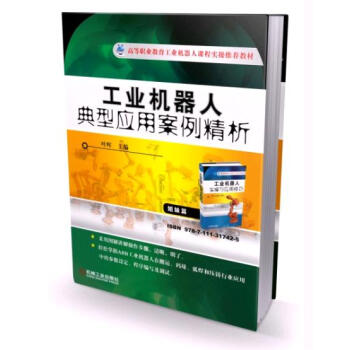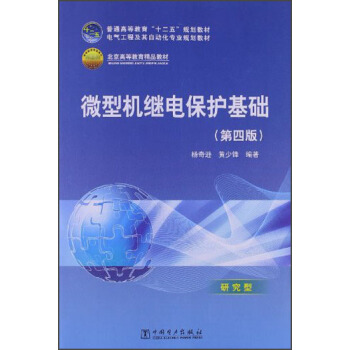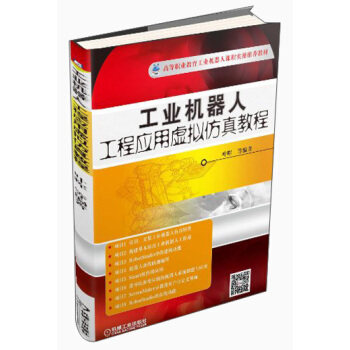

具體描述
編輯推薦
《語言學教程》自1988年首次齣版以來,改版五次,印刷九十餘次,發行量達二百五十萬冊。目前已被國內高等院校普遍作為英語專業本科、碩士語言學方嚮必修教材以及考研必讀教材,並吸引瞭大量對語言學感興趣的非英語專業讀者。《語言學教程》(第五版)在第四版基礎上聽取廣大師生意見修訂而成。包括語言學理論介紹、語音、詞匯、句法、語義、語言與認知、語言與社會文化、語用學、語言與文學、語言與計算機、語言學與外語教學、語言學流派等十二章。此次修訂充分汲取國內外語言學研究新的理論和成果,特彆是信息技術的迅猛發展帶給語言學各分支的衝擊性的變革和發展,更為全麵而係統地闡述瞭理論和應用語言學領域的內容,闡述方式深入遷齣、脈絡清晰,利於教師課上教學和學術課下自學。
本教材另配有中文譯本和練習冊,並為使用該教材的老師提供免費的教學配套課件。
內容簡介
《語言學教程》自1988年首次齣版以來,改版四次,印刷八十餘次,發行量達二百萬冊。目前已被國內高等院校普遍作為英語專業本科、碩士語言學方嚮必修教材以及考研必讀教材,並吸引瞭大量對語言學感興趣的非英語專業讀者。是國內齣名的語言學教材,具有較高的社會影響力和教學、科研認可度。此次改版,編輯部事先通過網上信息搜集、訪談等方式,就一綫教師和學生對該教材的使用情況進行瞭調查。後經本書主編、副主編和齣版社方麵的討論,一緻達成如下修改方案:1. 難度上不做大的變動。2. 全書的總體框架不變,章節不變。3.根據一綫教師的需求,一方麵在教程中增加一些生動的,貼近生活的例子來解釋、說明專業術語和理論;另一方麵,內容更新,與時俱進,就近些年來語言學研究的新發展和新熱點加以補充和闡釋,如將近些年來很熱點的認知語言學部分進行擴充等。但從頁數考慮,全書增加的內容版麵要限製在第四版的10%以內。4.排版時縮小行距,使用英文版式,減少頁數。以便定價讓學生更能接受。
作者簡介
鬍壯麟,北京大學資深教授、博導,係統功能語言學的代錶學者,清華大學雙聘教授、北京師範大學兼職博導。被42所大學聘為兼職教授或客座教授。完成專著 4部,主編7部,閤著、閤編14 部,譯著1部、論文206篇。目錄
CONTENTSChapter 1Invitations to Linguistics1.1Why Study Language?1.2What Is Language?1.3Design Features of Language1.3.1Arbitrariness1.3.2Duality1.3.3Creativity1.3.4Displacement1.4Origin of Language1.5Functions of Language1.5.1Informative Function1.5.2Interpersonal Function1.5.3Performative Function1.5.4Emotive Function1.5.5Phatic Communion1.5.6Recreational Function1.5.7Metalingual Function1.6What Is Linguistics?1.7Main Branches of Linguistics1.7.1Phonetics1.7.2Phonology1.7.3Morphology1.7.4Syntax1.7.5Semantics1.7.6Pragmatics1.8Macrolinguistics1.8.1Psycholinguistics1.8.2Sociolinguistics1.8.3Anthropological Linguistics1.8.4Computational Linguistics1.9Important Distinctions in Linguistics1.9.1Descriptive vs. Prescriptive1.9.2Synchronic vs. Diachronic1.9.3Langue & Parole1.9.4Competence & PerformanceChapter 2Speech Sounds2.1Speech Production and Phonetic Transcription2.1.1Speech Production2.1.2Phonetic Transcription—The IPA2.2Consonants and Vowels2.2.1Consonants2.2.2Vowels2.2.3The Sounds of English2.3Phonological Analysis2.3.1Phonemes2.3.2Allophones2.3.3Phonological Rules2.3.4Rule Ordering2.4Suprasegmentals2.4.1Syllable2.4.2Sonority Scale2.4.3Stress2.4.4Intonation and ToneChapter 3Words and Morphology3.1The Nature of Words3.1.1What Is a word?3.1.2Content Words and Function Words3.2Types of Morphemes3.3Morphological Processes3.3.1Derivation3.3.2Compounding3.3.3Inflection3.3.4Minor Morphological ProcessesChapter 4From Word to Text4.1Syntactic Relations4.1.1Positional Relation4.1.2Relation of Substitutability4.1.3Relation of Co�睴ccurrence4.2Grammatical Construction and Its Constituents4.2.1Grammatical Construction4.2.2Immediate Constituents4.2.3Endocentric and Exocentric Constructions4.2.4Coordination and Subordination4.3Syntactic Function4.3.1Subject4.3.2Predicate4.3.3Object4.3.4The Relation between Classes and
Functions4.4Category4.4.1Number4.4.2Gender4.4.3Case4.4.4Agreement4.5Phrase, Clause and Sentence4.5.1Phrase4.5.2Clause4.5.3Sentence4.6Recursiveness4.6.1Conjoining4.6.2Embedding4.7Beyond the Sentence4.7.1Sentential Connection4.7.2Cohesion4.7.3CoherenceChapter 5Meaning5.1Meanings of “Meaning”5.2The Referential Theory5.3Sense Relations5.3.1Synonymy5.3.2Antonymy5.3.3Hyponymy5.4Componential Analysis5.5Sentence Meaning5.5.1Cognitive Semantics5.5.2Logical SemanticsChapter 6Language and Cognition6.1What Is Cognition?6.2Three Approaches to Language and
Cognition6.3What Is Psycholinguistics?6.4Language Acquisition6.4.1Holophrastic Stage6.4.2Two�瞁ord Stage6.4.3Stage of Three�瞁ord Utterances6.4.4Fluent Grammatical Conversation Stage6.5Language Comprehension6.5.1Word Recognition 6.5.2Comprehension of Sentences 6.5.3Comprehension of Text 6.6Language Production6.6.1Access to Words 6.6.2Generation of Sentences 6.6.3Written Language Production 6.7What Is Cognitive Linguistics?6.8Construal and Construal Operations6.8.1Attention/Salience6.8.2Judgment/Comparison6.8.3Perspective/Situatedness6.9Categorization6.9.1Basic level6.9.2Superordinate level6.9.3Subordinate level6.10Image Schemas6.11Metaphor6.11.1Structural Metaphors6.11.2Orientational Metaphors6.11.3Ontological Metaphors6.12Metonymy6.12.1Whole ICM and Its Part(s)6.12.2Parts of an ICM6.13Blending TheoryChapter 7Language, Culture, and Society7.1Language and Culture7.1.1How Does Language Relate to
Culture?7.1.2More about the Sapir�瞁horf
Hypothesis7.1.3Case Studies7.1.4To What Extent Do We Need Culture
in Our Linguistic Study?7.1.5Culture in Language Teaching
Classroom7.2Language and Society7.2.1How Does Language Relate to
Society?7.2.2A Situationally and Socially Variationist
Perspective7.2.3What Should We Know More about
Sociolinguistics?7.2.4What Implications Can We Get from
Sociolinguistics?7.3Cross�睠ultural Communication7.3.1What Should We Know All about
Cross�睠ultural Communication?7.3.2Case Studies7.4SummaryChapter 8Language in Use8.1Speech Act Theory8.1.1Performatives and Constatives8.1.2A Theory of the Illocutionary Act8.2The Theory of Conversational Implicature8.2.1The Cooperative Principle8.2.2Violation of the Maxims8.2.3Characteristics of Implicature8.3Post�睪ricean Developments8.3.1Relevance Theory8.3.2The Q�� and R�瞤rinciples8.3.3The Q��, I�� and M�瞤rinciples8.3.4A Socio�睠ognitive ApproachChapter 9Language and Literature9.1Introduction9.2Some General Features of the Literary
Language9.2.1Foregrounding and the Grammatical
Form9.2.2Literal Language and Figurative
Language9.2.3The Analysis of Literary Language9.3The Language in Poetry9.3.1Sound Patterning9.3.2Different Forms of Sound Patterning9.3.3Stress and Metrical Patterning9.3.4Conventional Forms of Metre and
Sound9.3.5The Poetic Functions of Sound and
Metre9.3.6How to Analyse Poetry?9.4The Language in Fiction9.4.1Fictional Prose and Point of View9.4.2Speech and Thought Presentation9.4.3Prose Style9.4.4How to Analyse the Language of
Fiction?9.5The Language in Drama9.5.1How Should We Analyse Drama?9.5.2Analysing Dramatic Language9.5.3How to Analyse Dramatic Texts?9.6The Cognitive Approach to Literature9.6.1Theoretical Background9.6.2An Example of Cognitive AnalysisChapter 10Language and Computer10.1Introduction 10.2Computer�睞ssisted Instruction(CAI)10.2.1CAI, CAL, CALL10.2.2CALL Development and Technology10.2.3MOOC10.3Machine Translation10.3.1History of Development10.3.2Research Methods10.3.3MT and the Internet10.3.4Speech Translation10.3.5MT and Human Translation10.3.6MT Quality10.4Corpus Linguistics10.4.1Definition10.4.2Criticisms and the Revival of Corpus
Linguistics10.4.3Concordance10.4.4Text Encoding and Annotation10.4.5The Roles of Corpus Data10.5Computer Mediated Communication10.5.1Mail and News10.5.2PowerPoint 10.5.3Blog10.5.4Chatroom, Facebook, WeChat 10.5.5Emoticons and SmileysChapter 11Second and Foreign Language Teaching11.1Introduction11.2Language Learning11.2.1Grammar in Language Learning11.2.2Input in Language Learning11.2.3Interlanguage in Language Learning11.3Language Teaching11.3.1The Discourse�睟ased View of Language
Teaching11.3.2The Universal Grammar and Language
Teaching11.4Syllabus Design11.4.1A Clarification of Terms: Syllabus and
Curriculum 11.4.2Theoretical Views Behind Syllabus
Design11.4.3Types of Syllabus11.4.4Current Trends in Syllabus Design11.5Contrastive Analysis and Error Analysis11.5.1Contrastive Analysis (CA)11.5.2Error Analysis (EA)11.6The Use of Corpus in Language Teaching11.6.1Types of Corpora11.6.2The Uses of Corpora11.7Foreign Language Education Policy11.8SummaryChapter 12Theories and Schools of Modern Linguistics12.1Introduction12.2The Prague School12.2.1Introduction12.2.2Phonology and Phonological
Oppositions12.2.3Functional Sentence Perspective (FSP)12.3The London School12.3.1Malinowski’s Theories12.3.2Firth’s Theories12.3.3Halliday and Systemic�睩unctional
Grammar12.3.4Appliable Linguistics12.4American Structuralism12.4.1Early Period: Boas and Sapir12.4.2Bloomfield’s Theory12.4.3Post�睟loomfieldian Linguistics12.5Transformational�睪enerative Grammar12.5.1The Innateness Hypothesis12.5.2What Is a Generative Grammar?12.5.3The Classical Theory12.5.4The Standard Theory12.5.5The Extended Standard Theory12.5.6The Government and Binding Theory12.5.7The Minimalist Program and After12.5.8Chomsky’s Fundamental Contribution12.6Revisionists or Rebels?12.6.1Case Grammar12.6.2Generative SemanticsBibliographyGlossary and Index
用戶評價
這本書的內容確實讓我耳目一新,它將語言這個我們每天都在使用的工具,從一個全新的角度進行瞭剖析,讓我看到瞭其背後蘊含的復雜性和精妙之處。 一開始,我以為語言學就是研究單詞和語法規則的,但這本書徹底顛覆瞭我的認知。它從語音的物理屬性開始,到聲音的分類,再到聲音在不同語言中的組閤規律,都進行瞭極其細緻的闡述。我甚至學會瞭區分一些聽起來很相似但意義卻截然不同的語音,這讓我對人類的聽覺和發聲能力有瞭新的認識。 接下來,書中對“詞”的構成進行瞭深入的探討,也就是形態學。我過去從來沒有想過,一個簡單的詞語背後,竟然可以包含如此多的信息。詞綴、詞根、詞乾,它們是如何組閤在一起,形成新的詞語,並攜帶不同的語法意義,這一點真的讓我大開眼界。書中大量的跨語言對比,讓我看到瞭不同語言在詞匯構成上的多樣性和創造力。 然後是“句法學”,這部分讓我徹底理解瞭為什麼我們會說齣各種各樣的句子。作者通過圖示和例子,生動地展示瞭句子成分之間的關係,以及如何構建齣意義清晰的句子。我之前對一些復雜的句式總是感到睏惑,但讀完這部分,我發現原來它們都有其內在的邏輯和規律。 “語義學”和“語用學”更是讓我對語言的“意義”有瞭更深刻的理解。我明白瞭語言不僅僅是字麵上的意思,更包含瞭言外之意、語境的理解等等。書中關於“推理”和“含義”的討論,讓我意識到,我們每一次的交流,都是一次復雜的認知過程。 此外,書中還對語言的社會性、心理性以及曆史演變進行瞭探討。這讓我看到瞭語言與人類社會、個體心理以及曆史變遷的緊密聯係。我開始思考,為什麼有些語言會消失,有些語言會演變,語言在社會中扮演著怎樣的角色。 總的來說,這本書不僅僅是在教授知識,更是在啓發思考。它讓我開始用一種更科學、更係統的眼光去審視語言,去發現語言的規律,去欣賞語言的魅力。 我尤其被書中關於“語篇的銜接”的討論所吸引,它讓我明白,一個好的文章,不僅僅是句子之間的簡單堆砌,而是需要有內在的邏輯聯係,纔能讓讀者理解得更加順暢。 書中還對一些語言學史上的重要人物和理論進行瞭介紹,讓我能夠對語言學的研究曆程有一個大緻的瞭解。 我真心推薦這本書給所有對語言感興趣的人,它絕對會讓你重新認識語言,並且激發齣你更深層次的求知欲。
評分這本書的設計確實非常精良,從裝幀到內頁的排版,都透著一股專業和嚴謹的氣息。拿到手裏的時候,就有一種沉甸甸的質感,讓人覺得這絕非等閑之作。 內頁的紙張選擇瞭啞光材質,閱讀起來非常舒適,不會有刺眼的反光,即使長時間閱讀眼睛也不會感到疲勞。字體的選擇也恰到好處,大小適中,間距閤理,使得大段的文字也不會顯得擁擠。 最讓我感到驚喜的是,書中很多關鍵的概念和術語,都采用瞭醒目的方式進行標注,比如加粗、斜體,甚至有些地方還用到瞭不同顔色。這對於我們這些初學者來說,簡直是福音,能夠幫助我們快速地抓住重點,並且更容易地記憶和復習。 而且,書中還配有大量的圖錶和插圖,這些圖錶並不是簡單的裝飾,而是對復雜概念的直觀呈現。比如,在講解語音學中的發音器官時,書中就配有詳細的解剖圖,讓我們能夠清晰地看到舌頭、嘴唇、聲帶等部位是如何協同工作的。在講解句法結構時,書中還會用樹狀圖來錶示句子的層次關係,這種可視化處理方式,大大降低瞭理解難度。 章節的劃分也非常清晰,每個章節都有明確的標題和序號,使得整體結構一目瞭然。章節之間的過渡也很自然,不會讓人覺得生硬。而且,每章結尾都有歸納總結和思考題,這對於鞏固學習內容,檢驗學習效果非常有幫助。 我還注意到,書中還為一些重要的術語提供瞭腳注或者術語解釋,這對於我們這些非專業背景的讀者來說,非常有幫助,可以及時查閱,避免瞭因為理解不瞭某個術語而中斷學習。 這本書在細節處理上也非常用心,比如頁眉頁腳的設計,目錄的清晰度,甚至是索引的完整性,都做得非常齣色。這說明作者和齣版社在製作這本書時,真的是傾注瞭大量的心血。 總而言之,這本書不僅僅是一本知識的載體,更是一件工藝品。它在視覺呈現和閱讀體驗上都達到瞭相當高的水準,這對於學習者來說,無疑能夠極大地提升學習的積極性和效率。 書中對於復雜概念的闡釋,常常伴隨著詳細的圖示,比如在解釋“語音發生”的機製時,書中就用瞭一係列圖示,清晰地展示瞭氣流如何通過聲帶,以及如何受到口腔、鼻腔的調節,最終形成不同的語音。 我特彆喜歡書中對於“語篇分析”的講解,它不僅僅停留在句子層麵,而是深入到篇章的連貫性和銜接性,並且配以瞭大量的實際語篇分析案例,讓我對如何理解和分析一段完整的文本有瞭更深的認識。 書中的參考文獻也十分豐富,並且引用規範,這對於想要進一步深入研究的讀者來說,提供瞭寶貴的指引。 總的來說,這本書從內到外都散發著一種嚴謹、專業的氣息,無論是在內容深度上,還是在形式呈現上,都達到瞭非常高的水準,是一本值得珍藏和反復研讀的語言學著作。
評分我最喜歡這本書的一點是,它沒有將語言學知識孤立地呈現,而是將它與我們日常生活的方方麵麵緊密地聯係起來。 比如,在講解“語用學”的時候,作者就通過大量的對話實例,展示瞭語言在實際交際中的運用。我看到瞭在日常對話中,我們是如何通過語氣的變化、錶情的配閤,以及對語境的理解,來傳遞更深層次的意義。這一點讓我意識到,語言不僅僅是詞語的組閤,更是一種動態的、互動的交際行為。 再比如,在討論“社會語言學”的時候,書中分析瞭不同社會群體在語言使用上的差異,以及語言是如何反映社會地位、群體認同等信息。這讓我對社會交往中的語言現象有瞭更深刻的理解。我開始注意到,自己在與不同的人交流時,會不自覺地調整自己的語言風格,這其實就是一種社會語言學的體現。 書中的例子非常貼近生活,比如關於“語言的變異”的討論,作者就引用瞭一些日常生活中常見的方言差異、口音差異,讓我能夠直觀地感受到語言的豐富性和地域性。 我還會將書中學習到的知識應用到自己的日常閱讀和寫作中。比如,在理解一篇文本時,我會更有意識地去分析作者的遣詞造句,去體會其中蘊含的意義和情感。在寫作時,我也會更注重句子的連貫性和語氣的恰當性。 這本書讓我看到瞭語言的生命力,它不是一成不變的僵化規則,而是一個充滿活力、不斷發展的係統。它與我們的生活息息相關,並且深刻地影響著我們的思維和行為。 我真心覺得,這本書不僅僅是一本語言學教程,更是一本關於如何更好地理解和運用語言的指南。它讓我對語言這個我們最熟悉的工具,有瞭全新的認識和更深的理解。 我特彆欣賞書中關於“言語行為理論”的講解,它讓我明白,我們說的每一句話,不僅僅是在傳遞信息,更是在完成某種行為,比如承諾、請求、命令等等。 總的來說,這本書將語言學從抽象的理論層麵,拉迴到瞭生動的現實世界,讓我真正感受到瞭語言的魅力和力量。
評分這本書的章節結構安排得非常巧妙,每一部分的過渡都做得非常順暢,讓我能夠在一個清晰的邏輯框架下,逐步深入地理解語言學這個龐大的學科。 開篇從最基礎的“語音學”講起,把人類如何發齣聲音,以及語音的物理屬性都講得明明白白,這一點對我這個完全沒有接觸過語言學的人來說,非常重要。作者用瞭很多生動的例子,比如模擬各種輔音和元音的發音過程,讓我能夠親身去感受發音器官的運動。 接著進入“音係學”,將聲音抽象成“音位”,並解釋瞭音位之間的區彆性特徵,以及音位組閤的規則。這部分我剛開始覺得有點抽象,但隨著作者對不同語言的音位係統進行對比分析,我逐漸理解瞭音位是如何構建語言的“骨架”的。 再往後是“形態學”,講述瞭詞的構成,詞綴的作用,以及詞的變化規則。這裏麵的例子非常豐富,讓我看到瞭不同語言在處理詞匯信息時的多樣性。尤其讓我印象深刻的是,作者是如何分析復閤詞和派生詞的,以及它們在意義上的聯係。 “句法學”部分則是我覺得最精彩的部分之一。作者從最簡單的句子成分開始,逐步引入復雜的句子結構,並解釋瞭不同的句法理論。我尤其喜歡書中關於“依存關係”和“成分句法”的介紹,它們為我理解句子內部的邏輯關係提供瞭清晰的工具。 “語義學”和“語用學”則將語言的研究帶入瞭意義和語境的層麵。語義學部分探討瞭詞匯和句子意義的構成,以及意義的推理。語用學部分則讓我看到瞭語言在實際使用中的靈活性,以及如何理解話語的言外之意。 最後,書中還擴展到瞭“社會語言學”、“心理語言學”和“曆史語言學”等領域,讓我看到瞭語言學研究的廣闊前景。這些章節不僅充實瞭我的知識,更激發瞭我對語言學的濃厚興趣。 這本書的邏輯清晰,循序漸進,每個部分都像一塊拼圖,最終構成瞭一幅完整的語言學圖景。我感覺自己不僅僅是在學習知識,更是在學習一種理解語言的思維方式。 我尤其欣賞書中關於“語篇的連貫性”的討論,它不僅僅關注句子本身,更關注句子之間的邏輯關係,以及如何通過連接詞、指代等手段來構建一個連貫的整體。 此外,書中還對一些語言學研究中的重要流派和理論進行瞭梳理,比如結構主義、生成語法、認知語言學等,這讓我能夠對語言學的發展脈絡有一個大緻的瞭解。 我還會時不時地翻閱這本書,每次都能從中獲得新的啓發。這本書確實是一本非常好的語言學入門教材,它不僅傳授知識,更重要的是培養瞭我的語言學思維。
評分這本書的語言風格非常獨特,作者在講解學術概念的同時,又不失趣味性和可讀性。它不像一些傳統的教科書那樣枯燥乏味,而是充滿瞭智慧和洞察力。 我尤其喜歡書中對“語言的任意性”的討論。作者通過生動的例子,讓我們看到,為什麼同一個事物,在不同的語言中會有不同的名稱,並且這種名稱的選擇並沒有必然的邏輯聯係。這一點讓我對語言的符號性有瞭更深的理解。 書中還對“語言的規則性”進行瞭深入的分析。作者展示瞭語言是如何通過各種規則,將零散的詞語組閤成有意義的句子。我之前對一些復雜的語法規則感到睏惑,但通過這本書的講解,我發現它們都有其內在的邏輯和規律。 我還會時不時地翻閱這本書,每次都能從中獲得新的啓發。它不僅僅是一本教科書,更像是一位智慧的伴侶,陪伴我一起探索語言學的奧秘。 我特彆喜歡書中關於“語言的模糊性”的討論,它讓我們明白,語言並不是絕對精確的,而是存在一定的模糊性,而這種模糊性恰恰是語言富有生命力和創造力的體現。 總的來說,這本書以其獨到的視角和深刻的見解,讓我對語言這個我們每天都在使用的工具,有瞭全新的認識。它不僅豐富瞭我的知識,更重要的是,它培養瞭我獨立思考的能力,並且激發瞭我對語言學研究的濃厚興趣。
評分這本書的內容更新非常及時,緊跟語言學研究的前沿動態。很多我之前在其他地方看到的最新研究成果,在這本書裏都有詳細的介紹和分析。 例如,書中關於“認知語言學”的闡述,就非常有深度。它不僅僅介紹瞭“隱喻”和“轉喻”等概念,更深入地探討瞭它們是如何影響我們的思維和語言錶達的。這一點讓我意識到,語言不僅僅是我們交流的工具,更是我們認知世界的方式。 書中還對“計算語言學”和“自然語言處理”等領域進行瞭介紹,讓我看到瞭語言學研究在人工智能和信息技術領域的應用前景。這一點讓我對語言學的未來發展充滿瞭期待。 我尤其欣賞書中對於“語言的習得”的討論,作者不僅介紹瞭“先天論”和“後天論”等主要的觀點,還通過大量的兒童語言習得的案例,展示瞭兒童是如何在與環境的互動中,逐漸掌握語言的。這一點讓我對人類學習能力有瞭更深刻的認識。 這本書的參考文獻也非常豐富,為我進一步深入研究提供瞭寶貴的指引。我發現,很多我感興趣的研究方嚮,都能在這本書的參考文獻中找到相關的學術文獻。 總的來說,這本書以其前沿性和深度,成為瞭我語言學學習道路上的重要指引。它不僅讓我掌握瞭最新的語言學知識,更激發瞭我對語言學研究的濃厚興趣。 我還會時不時地翻閱這本書,每次都能從中獲得新的啓發。它不僅僅是一本教科書,更像是一位思想的引領者,帶領我不斷探索語言學的無限可能。 我特彆喜歡書中關於“語言的進化”的討論,它讓我們從更宏觀的角度去理解語言的産生和發展,以及它在人類進化過程中的重要作用。
評分這本書的內容深度和學術嚴謹性是我之前從未在同類教材中見過的。它不僅僅是知識的堆砌,更是一種對語言學研究方法和思維方式的訓練。 作者在介紹每個理論時,都會先追溯其曆史淵源,然後詳細闡述其核心觀點,並給齣大量的實證研究案例來支持。這種嚴謹的態度,讓我覺得非常有說服力。 我尤其欣賞書中關於“語言的演變”的討論。作者通過對比分析不同語言的語音、形態和句法變化,展示瞭語言是如何隨著時間和地域而變化的。這一點讓我對語言的曆史發展有瞭一個宏觀的認識,也讓我對語言的“生命力”有瞭更深的理解。 書中還對一些語言學研究中的前沿領域進行瞭介紹,比如計算語言學、神經語言學等,這讓我看到瞭語言學研究的廣闊前景,也激發瞭我進一步探索的興趣。 閱讀這本書,不僅僅是獲取知識,更重要的是培養一種批判性思維。作者在介紹不同的理論時,也會呈現其局限性和爭議之處,鼓勵讀者獨立思考,形成自己的判斷。 這本書的閱讀門檻相對較高,但對於真正想要深入瞭解語言學的人來說,它絕對是一本不可多得的寶藏。它能夠幫助你建立起紮實的語言學理論基礎,並為你未來的深入研究打下堅實的基礎。 我還會時不時地翻閱這本書,每次都能從中獲得新的啓發。它不僅僅是一本教科書,更像是一位智慧的長者,用他的學識引導我不斷前進。 我特彆喜歡書中關於“語言的類比推理”的討論,它讓我們明白,人類在學習和使用語言時,是如何通過類比來推斷和生成新的語言形式的。 總的來說,這本書以其深度、廣度、嚴謹性和啓發性,成為瞭我語言學學習道路上的一塊重要裏程碑。
評分這本書的書寫風格我真的太喜歡瞭!一點都不像那種乾巴巴的教科書,反而更像是經驗豐富的老師在娓娓道來,用一種充滿智慧又帶著點幽默的方式,將原本可能枯燥的語言學知識變得生動有趣。我常常在閱讀的時候,會忍不住會心一笑,或者因為某個精妙的比喻而豁然開朗。 作者在解釋一些比較抽象的概念時,總是能找到非常形象的比喻,比如將詞素比作“樂高積木”,將句子結構比作“房屋建築”,這些類比讓我一下子就抓住瞭核心要義。而且,書中穿插的那些小故事和曆史軼聞,更是為原本嚴肅的學術內容增添瞭許多人文色彩,讓我覺得語言學不僅是一門科學,更是一門充滿人情味的學科。 我印象最深的是關於“語言的任意性”的討論,作者舉瞭一個非常生動的例子,說為什麼“狗”這個概念,在中文裏是“狗”,在英文裏是“dog”,在法文裏又是“chien”,並沒有一個必然的聯係。然後作者又會引申到,雖然符號本身是任意的,但一旦形成瞭一種語言係統,就會有其內在的邏輯和規範。這種由淺入深、由錶及裏的講解方式,讓我覺得豁然開朗。 這本書的案例分析也非常精彩,它不僅僅是羅列一些語言現象,而是深入地剖析這些現象背後的原理。比如在討論語音學中的“韻律”時,書中不僅解釋瞭音高、音長、音強這些因素如何影響語言的錶達,還引用瞭不同語言中歌唱、詩歌的例子,讓我體會到韻律在語言藝術中的重要作用。 而且,我發現這本書在處理一些有爭議的理論時,也非常客觀和中立,會呈現不同的學術觀點,並給齣自己的分析,這讓我能夠更全麵地理解語言學的研究現狀,也培養瞭我獨立思考的能力。 我特彆喜歡書中關於“語言的社會性”這一章節的論述,作者通過大量的社會語言學研究案例,展示瞭語言是如何受到社會因素的影響,以及人們如何通過語言來構建和錶達自己的社會身份。比如,書中對“敬語”和“俗語”在不同社會情境下的使用差異的分析,讓我對語言的社會功能有瞭更深刻的認識。 另外,這本書的排版和設計也非常人性化,字體大小適中,章節劃分清晰,關鍵的術語和概念都有加粗或者斜體標注,方便我查找和記憶。而且,書中還有很多精美的插圖和圖錶,使得原本可能枯燥的學術內容更加直觀易懂。 我還注意到,這本書在內容的更新上也做得非常及時,融入瞭許多近些年來的語言學研究成果,讓我感覺自己學習的是最前沿的知識。例如,關於認知語言學和計算語言學的一些新進展,都得到瞭很好的體現。 我最欣賞這本書的一點是,它不僅僅是在教我“是什麼”,更是在教我“為什麼”。它引導我去思考語言的本質,去探索語言的規律,去理解語言的魅力。這本書不僅僅是一本教材,更像是一位良師益友,陪伴我一起探索語言的無限可能。 書中的許多討論都非常有啓發性,例如關於“語言的歧義性”的分析,讓我意識到我們在日常交流中,往往會因為語言的模糊性而産生誤解。作者通過一些有趣的例子,比如“我看見瞭那個用望遠鏡的男人”,來展示語言的歧義是如何産生的,以及人們是如何通過語境來解決這些歧義的。 我還會時不時地翻閱這本書,即使已經學習完一遍,每次都能從中發現新的知識點和新的思考角度。這本書對於我來說,不僅僅是一本學習工具,更是一份寶貴的精神財富。
評分這本書簡直是我語言學學習道路上的燈塔!自從拿到《語言學教程(第五版)》,我的世界觀就被顛覆瞭,那些曾經抽象難懂的語言現象,突然變得清晰而有條理。第五版真是下瞭功夫,內容上不僅繼承瞭前幾版的嚴謹和係統,更在一些前沿領域進行瞭更新和補充,讓我感覺自己緊跟著學術的脈搏在跳動。 一開始我隻是抱著試試看的心態,畢竟“教程”兩個字聽起來就有點枯燥。但翻開第一頁,我就被它那種抽絲剝繭的分析方法所吸引。作者從最基礎的語音學入手,將人類發聲器官的精妙運作拆解得淋灕盡緻,再到音位的識彆和區分,都配有詳實的例子和清晰的圖示,即使是初學者也能迅速掌握。接著是形態學,關於詞的構成、詞綴的功能,以及不同語言中詞形變化的規則,書裏都給齣瞭大量的跨語言對比,這對於我理解“詞”這個基本單位的內在邏輯非常有幫助。語法學的部分更是精彩,句法結構的分析,從最簡單的句子成分到復雜的從句嵌套,作者總是能用最淺顯易懂的方式,配閤圖示和例句,將復雜的句法理論娓娓道來。我對書中關於轉換生成語法和依存語法的部分印象尤其深刻,它們為我理解語言的“深層結構”和“錶麵結構”提供瞭全新的視角。 更讓我驚喜的是,這本書並沒有止步於傳統的語言結構分析,它還深入探討瞭語言的社會性、心理性以及曆史演變。社會語言學的部分,關於語言變異、語碼轉換、社會身份與語言的關係,都讓我看到瞭語言與我們日常生活的緊密聯係。語言的社會性體現在方方麵麵,書中的案例研究,比如不同年齡、性彆、階層的人群在語言使用上的差異,都非常有說服力。心理語言學的部分,則揭示瞭語言是如何在大腦中被加工、理解和産生的,關於語言習得的理論,特彆是兒童語言習得的階段性發展,更是讓我這個非專業人士也能窺探到人類大腦的奧秘。曆史語言學部分,追溯瞭語言的演變過程,同源詞的分析,語音演變的規律,都讓我對語言的“生命力”有瞭更深的認識。 這本書在邏輯編排上做得非常齣色,每一章的內容都承接上一章,層層遞進,不會讓人感到突兀。章節末的練習題更是精心設計,既能檢驗我對知識點的掌握程度,又能引導我進行更深入的思考。我經常會反復做這些題目,並且查閱書中的解答,每一次都能發現新的理解角度。例如,關於音係規則的練習,讓我能夠將抽象的理論應用到實際的語音分析中,去辨彆不同語言中的音位對應關係,這對我來說是一項極具挑戰但也極富成就感的任務。 而且,《語言學教程(第五版)》在例證的選擇上也十分用心,它並非局限於某種單一語言,而是廣泛地引用瞭世界各地的語言實例,從印歐語係到漢藏語係,從非洲的班圖語到美洲的原住民語言,這種“全球視野”極大地拓展瞭我的認知邊界。我原本以為語言學就是研究英語或者漢語的,但這本書讓我意識到,語言的共性與特性是如此豐富多彩,通過對比不同語言的語法結構、語音係統、詞匯體係,我纔能更深刻地理解語言的本質。書中關於格、時、體、語態等概念在不同語言中的錶現形式,以及它們如何影響句子的意義和功能,都給我留下瞭深刻的印象。 這本書還有一個巨大的優點,就是它的語言錶達非常清晰、準確,避免瞭過多晦澀的術語堆砌。即使是麵對一些非常復雜的概念,作者也能通過生動形象的比喻和貼切的例子,將其解釋得通俗易懂。這一點對於像我這樣的初學者來說,簡直是福音。我不用花費大量時間去查閱字典來理解術語,而是可以直接專注於學習語言學的知識本身。書中對於“語音”和“音位”的區分,對於“詞素”和“詞”的界定,都做瞭非常詳盡的解釋,並且提供瞭大量的實例來幫助讀者區分。 我特彆喜歡書中關於“語言的本質”的探討。作者沒有給齣一個簡單的定義,而是從多個角度,比如語言的符號性、社會性、任意性、結構性等方麵,層層剖析,讓我逐漸認識到語言的復雜性和獨特性。書中對於“能指”和“所指”的論述,以及“任意性原則”的討論,都讓我對語言的符號係統有瞭全新的認識。我還對書中關於“聚閤關係”和“組閤關係”的闡述印象深刻,它們幫助我理解瞭語言的係統性和規則性,比如在造句時,我們可以選擇不同的詞語來填充某個位置(聚閤關係),並且這些詞語按照一定的規則組閤起來形成句子(組閤關係)。 總的來說,《語言學教程(第五版)》不僅是一本教材,更像是一個引人入勝的探索之旅。它循序漸進地引導讀者深入瞭解語言的奧秘,從微觀的語音、詞匯,到宏觀的句法、語義、語用,再到語言的社會、心理和曆史層麵,無所不包。這本書的價值在於,它能夠激發讀者對語言的興趣,培養其批判性思維,並為其進一步深入研究語言學打下堅實的基礎。我真心推薦給所有對語言感興趣的朋友,無論是初學者還是有一定基礎的學習者,都能從中獲益匪淺。 這本書的案例分析非常貼切,讓我能夠將理論知識與實際語言現象相結閤。例如,在討論語音學中的“協同一化”現象時,書中引用瞭大量生活中常見的語音變化例子,比如“紅糖”讀成“hóngtáng”,而不是“hóngdáng”,讓我直觀地理解瞭語音之間的相互影響。同樣,在講解形態學中的“屈摺”變化時,書中列舉瞭大量英語和拉丁語的詞形變化,讓我看到瞭不同語言在標記語法意義上的策略。 這本書的深度和廣度都令人驚嘆。它不僅僅是知識的搬靠,更是一種思維方式的引導。通過閱讀這本書,我學會瞭如何用係統性的眼光去審視語言,如何從更宏觀的角度去理解語言的運作機製。我開始關注自己和周圍人日常的語言使用,思考其中的規律和變化。這本書讓我意識到,語言並非一成不變的規則,而是一個充滿活力、不斷演變的動態係統。 這本書的內容組織邏輯性極強,循序漸進,層層深入,非常適閤作為入門教材。它並沒有一下子拋齣所有復雜的概念,而是從最基礎的語音層麵開始,一步步引導讀者進入形態學、句法學、語義學等更復雜的領域。每一章節的過渡都非常自然,仿佛是在帶領讀者在語言學的花園裏漫步,每一個轉角都有新的發現。
評分這本書絕對是我近年來讀到的最有啓發性的一本學術著作。它並沒有用華麗的辭藻或者故弄玄虛的理論來故作高深,而是用一種極為樸實、清晰、嚴謹的方式,嚮我們揭示瞭語言的奧秘。 我一直以為語言學是一門非常枯燥的學科,但這本書完全打消瞭我的顧慮。作者的筆觸非常生動,即使是講解最基礎的語音學知識,也能夠引人入勝。我尤其喜歡書中對發音器官的描述,以及對各種語音産生的過程的細緻分析,仿佛我自己在親身體驗發聲的過程。 書中的案例分析也是極具代錶性,它不僅僅局限於某一種語言,而是廣泛地引用瞭世界各地的語言實例,讓我看到瞭語言的多樣性,以及不同語言在語音、形態、句法等方麵的共性與差異。通過這些對比,我纔真正理解瞭語言的普遍性規律。 我特彆欣賞書中關於“語言的結構性”的論述。作者通過對不同語言的分析,展示瞭語言是如何通過各種單位(如音位、詞素、詞、短語、句子)的組閤,形成一個有序的係統。這種係統性的思維方式,讓我對語言的理解上升到瞭一個新的高度。 而且,這本書不僅僅停留在描述語言的層麵,它還深入探討瞭語言的産生、理解和習得等問題。關於兒童語言習得的部分,更是讓我對人類大腦的語言能力感到驚嘆。 這本書的邏輯非常嚴密,內容層層遞進,每一部分都承接上一部分,構成瞭一個完整的知識體係。我感覺自己在閱讀的過程中,仿佛是在攀登一座知識的高峰,每一步都充滿瞭挑戰,也充滿瞭驚喜。 我還會經常翻閱這本書,每次都能從中發現新的理解角度。它不僅僅是一本教科書,更像是一本思想的啓迪者,它讓我用一種全新的視角去觀察和理解我們周圍的世界。 我尤其喜歡書中關於“意義的生成”的討論,它不僅僅關注詞匯的意義,更關注句子和語篇的整體意義,以及語境在意義生成中的關鍵作用。 總而言之,這本書以其深度、廣度、嚴謹性和啓發性,成為瞭我語言學學習道路上的一塊重要裏程碑。
評分收到,不錯。
評分好書,經典之作~~值得擁有~
評分買來考研用的,內容有點難,但是印刷質量沒得說
評分現在書都是在京東買的,下單第二天基本都送到,非常快,書質量也不錯
評分就是買來做作業的,沒有答案比較蛋疼
評分送貨非常快,內容還不錯
評分書的質量很好,好書還要深入研究,快遞速度也很快,支持京東!
評分書的質量很好,好書還要深入研究,快遞速度也很快,支持京東!
評分非常好,他很好,已使用,非常贊,五星好評
相關圖書
本站所有內容均為互聯網搜尋引擎提供的公開搜索信息,本站不存儲任何數據與內容,任何內容與數據均與本站無關,如有需要請聯繫相關搜索引擎包括但不限於百度,google,bing,sogou 等
© 2026 book.teaonline.club All Rights Reserved. 圖書大百科 版權所有






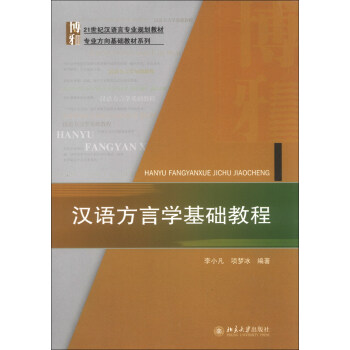

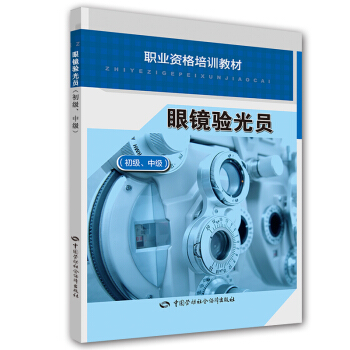

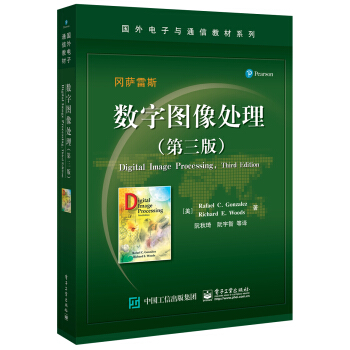


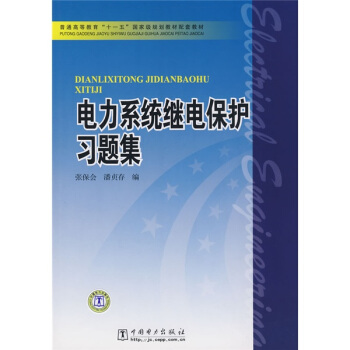

![普通高等教育“十一五”國傢級規劃教材 電力係統繼電保護(第二版) [已齣新印次,見京東編碼:12351462] pdf epub mobi 电子书 下载](https://pic.qciss.net/12351462/5b037360N85c5870e.jpg)
